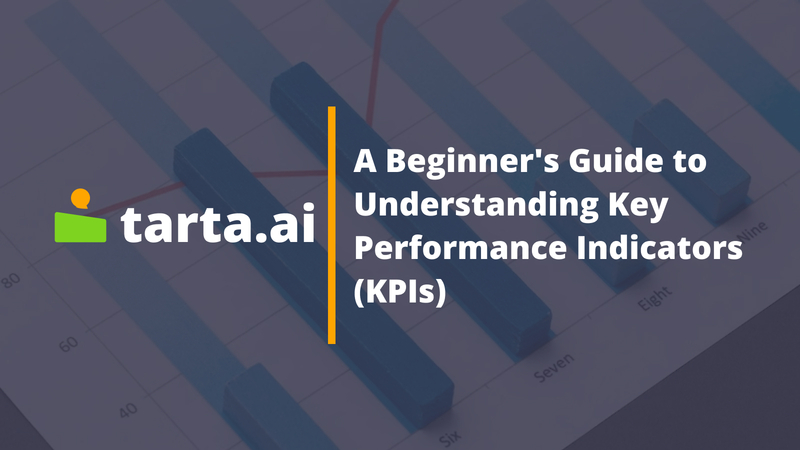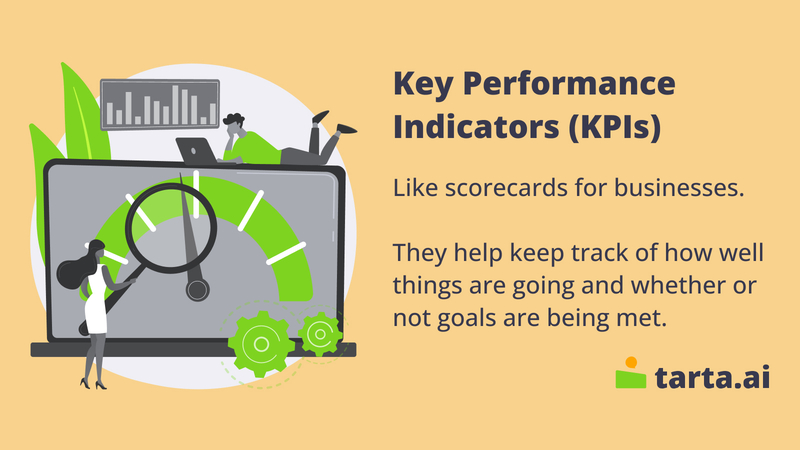A Beginner's Guide to Understanding Key Performance Indicators (KPIs)

KPIs, or Key Performance Indicators, are specific metrics that businesses use to measure progress towards their goals and objectives. KPIs help organizations to track performance and identify areas for improvement, allowing them to make data-driven decisions that lead to better outcomes. In today's rapidly changing business landscape, KPIs have become an essential tool for measuring success and driving growth.
In this article, we will provide a beginner's guide to understanding KPIs, explaining what they are, why they're important, and how businesses can use them to achieve their objectives. Whether you're a small business owner or a manager at a large corporation, understanding KPIs is crucial for achieving success in today's competitive market.
What Are Key Performance Indicators (KPIs)?
KPIs are specific measures used by businesses to evaluate their progress towards achieving their strategic objectives. Unlike other metrics or data points, KPIs are carefully selected to provide meaningful insights into an organization's performance in key areas of its operations.
While KPIs are a type of metric, not all metrics are KPIs. KPIs are metrics that are most critical to the success of a business and are aligned with its strategic objectives. They are used to track progress over time, benchmark against industry standards, and identify areas of improvement.

There are various types of KPIs, and they can be categorized based on different aspects of a business. Here are some common types of KPIs:
- Financial KPIs: These KPIs measure the financial performance of a business, such as revenue growth, profit margins, and return on investment (ROI).
- Customer KPIs: These KPIs track the satisfaction and loyalty of customers, such as customer retention rates, net promoter score (NPS), and customer lifetime value (CLV).
- Internal Process KPIs: These KPIs measure the efficiency and effectiveness of internal processes, such as inventory turnover, lead time, and cycle time.
- Employee KPIs: These KPIs measure employee performance and engagement, such as employee turnover rate, absenteeism, and productivity.
KPIs are critical metrics that businesses use to measure progress towards their objectives. They differ from other metrics and data points in that they are carefully selected to provide meaningful insights into a business's performance in key areas. Different types of KPIs exist based on the aspect of the business being evaluated.
Why Are KPIs Important?
KPIs are important for businesses for several reasons. They provide a clear and measurable way for organizations to evaluate their performance and progress towards achieving their goals and objectives. Here are some key reasons why KPIs are important:
- Measure Progress: KPIs provide a way to track progress towards achieving strategic objectives. They allow businesses to identify areas where they are performing well and areas where improvements are needed.
- Accountability: KPIs drive accountability by providing a benchmark against which performance can be measured. When KPIs are established, individuals and teams are held accountable for their performance, which promotes a culture of accountability and continuous improvement.
- Performance Improvements: KPIs help businesses identify areas where improvements are needed, leading to improved performance. By tracking KPIs, organizations can make data-driven decisions, focus on what matters most, and adjust their strategies accordingly.
- Better Decision Making: KPIs provide insights into the key areas of the business, allowing for informed decision-making. They can help managers identify trends and patterns that may not be apparent through other metrics and data points.
For example, if a business has set a KPI to improve customer retention rates, they can track the progress towards that goal and make changes to their customer service strategy to improve retention. By monitoring KPIs related to employee engagement, businesses can identify areas where employee performance and satisfaction can be improved, leading to increased productivity and lower turnover rates.
KPIs are important for businesses because they provide a way to measure progress towards objectives, drive accountability, promote performance improvements, and enable better decision-making. By tracking KPIs, businesses can identify areas where they are excelling and areas that require improvements, leading to more successful outcomes.

Photo: Freepik
How to Select KPIs?
Choosing the right KPIs is critical to the success of a business. The process of selecting KPIs involves identifying and defining metrics that align with the business's goals and objectives. Here's a step-by-step process for selecting KPIs:
Step 1: Identify Business Goals
Start by identifying the business's overarching goals and objectives. This will help identify the areas that require measurement and evaluation.
Step 2: Define Objectives
Define the specific objectives that the business wants to achieve. These should be specific, measurable, achievable, relevant, and time-bound (SMART).
Step 3: Identify Metrics
Identify the metrics that align with each objective. These should be directly related to the objective, measure the right thing, and be relevant to the business's strategy.
Step 4: Narrow Down
Narrow down the list of metrics to a manageable number that the business can realistically track and analyze.
Step 5: Define KPIs
Define KPIs for each metric by setting targets, benchmarks, and thresholds.
It's important to choose KPIs that are measurable, relevant, and timely. Measurable KPIs allow businesses to track performance over time and make informed decisions. Relevant KPIs are aligned with the business's goals and objectives and provide insights into areas of the business that require attention. Timely KPIs are monitored frequently to enable quick adjustments to strategies and tactics.
Example:
If a business wants to improve its customer retention rates, a relevant KPI might be customer churn rate. This metric is measurable, relevant to the objective, and can be tracked on a monthly or quarterly basis. The business could set a target of reducing customer churn by 10% within the next six months and monitor progress towards this goal using this KPI.
Selecting the right KPIs is critical to achieving business objectives. The process involves identifying and defining metrics that align with the business's goals and objectives and choosing KPIs that are measurable, relevant, and timely. By selecting the right KPIs, businesses can track progress towards objectives, make informed decisions, and drive improvements in performance.
How to Track and Analyze KPIs?
Once KPIs have been selected, the next step is to track and analyze them. This involves collecting data on the KPIs, analyzing the data to identify trends, and using the insights gained to make data-driven decisions. Here are some methods for tracking KPIs and analyzing the data:
- Spreadsheets: Spreadsheets are a simple and effective way to track KPIs. Businesses can use spreadsheets to collect and organize data, create charts and graphs, and monitor progress towards goals.
- Dashboards: Dashboards provide a visual representation of KPIs, making it easy for businesses to monitor performance in real-time. Dashboards can be customized to display data in a variety of ways and can be shared with stakeholders.
- Software: There are many software solutions available that can help businesses track and analyze KPIs. These solutions can automate data collection, provide real-time reporting, and allow for collaboration across teams.
To analyze KPI data, businesses should look for trends and patterns over time. This can be done by comparing current data to historical data or by analyzing data across different time periods. Businesses should also look for correlations between different KPIs to gain insights into how different areas of the business impact each other.
Once trends and patterns have been identified, businesses can use the insights gained to make data-driven decisions. For example, if a business has identified a trend of declining customer satisfaction scores, they can use this information to identify the root causes of the decline and make changes to their customer service strategy.

Photo: Freepik
Tracking and analyzing KPIs involves collecting data, analyzing trends, and using insights gained to make data-driven decisions. Businesses can use spreadsheets, dashboards, and software to track KPIs and should analyze data to identify trends and areas for improvement. By using KPIs to make data-driven decisions, businesses can achieve their objectives and drive performance improvements.
Interpreting KPIs Data
Interpreting KPI data involves analyzing the data to gain insights into business performance.
Businesses can use KPI data to identify trends, strengths, weaknesses, and opportunities for improvement. For example, if a business's customer satisfaction scores have been declining over time, they can use this information to identify areas of the business that are impacting customer satisfaction and make changes to improve the customer experience.
Using KPI data to inform decision-making involves using the insights gained from KPI data to make informed decisions about business strategy and tactics. For example, if a business has identified a trend of declining employee satisfaction scores, they can use this information to make changes to their employee engagement strategy in order to improve employee satisfaction and retention.
Interesting fact:
Businesses that use KPIs are twice as likely to achieve their goals compared to those that don't.
Interpreting KPI data involves analyzing the data to gain insights into business performance, and using KPI data to inform decision-making involves using the insights gained to make informed decisions about business strategy and tactics.
Best Practices for Using KPIs
While KPIs can be a powerful tool for measuring business performance, it's important to use them effectively in order to achieve meaningful results. Here are some best practices for using KPIs:
- Set realistic targets and goals: It's important to set targets and goals for KPIs that are realistic and achievable. This can help to keep employees motivated and focused on achieving the goals, while also ensuring that the business is moving in the right direction.
- Review and adjust KPIs regularly: KPIs should be reviewed and adjusted regularly to ensure that they remain relevant and effective. This may involve changing the KPIs themselves or adjusting the targets and goals associated with them.
- Ensure KPIs are aligned with business objectives: KPIs should be aligned with the business's objectives and strategy. This can help to ensure that the business is focused on achieving the right outcomes and that KPIs are contributing to overall business success.
- Ensure KPIs are measurable: KPIs should be measurable in order to provide meaningful data. This may involve defining clear metrics and ensuring that data is being collected and analyzed effectively.
- Involve stakeholders in KPI development: Involving stakeholders in KPI development can help to ensure that KPIs are aligned with business objectives and that they are relevant and meaningful to the people who will be responsible for achieving them.
- Avoid common mistakes: Common mistakes when implementing KPIs include focusing on too many KPIs at once, setting targets that are too aggressive or unrealistic, failing to align KPIs with business objectives, and not regularly reviewing and adjusting KPIs.
By following these best practices, businesses can use KPIs effectively to measure performance, drive accountability, and make data-driven decisions that lead to improved outcomes.

Photo: Freepik
In today's competitive business landscape, KPIs are more important than ever. By tracking and analyzing key metrics, businesses can gain valuable insights into their performance, identify areas for improvement, and make data-driven decisions that drive success.
Whether you're a small startup or a large corporation, KPIs can help you achieve your business objectives and stay ahead of the competition. By following best practices for selecting, tracking, and analyzing KPIs, you can use this powerful tool to measure progress, drive accountability, and ultimately achieve your goals.
- KPIs are key performance indicators that help businesses track and measure progress towards their goals and objectives.
- KPIs differ from metrics and data points in that they are specific, measurable, and relevant to business objectives.
- There are different types of KPIs, including financial, customer, internal process, and employee KPIs.
- KPIs are important for driving accountability and performance improvements within businesses.
- When selecting KPIs, it's important to choose ones that are measurable, relevant, and timely.
- KPIs can be tracked and analyzed using spreadsheets, dashboards, and software.
- Best practices for using KPIs include setting realistic targets and goals, reviewing and adjusting KPIs regularly, ensuring KPIs are aligned with business objectives, involving stakeholders in KPI development, and avoiding common mistakes.
FAQ
How many KPIs should an organization track?
There is no one-size-fits-all answer to this question, as the number of KPIs an organization tracks depends on its size, complexity, and goals. However, it's generally recommended that organizations focus on a few key KPIs to avoid overwhelming employees with too much data.
How often should KPIs be reviewed?
KPIs should be reviewed on a regular basis, typically monthly or quarterly. This allows organizations to track progress over time and make adjustments as needed.
What is the difference between leading and lagging KPIs?
Leading KPIs are metrics that predict future performance, while lagging KPIs measure past performance. For example, a leading KPI for a sales team might be the number of new leads generated, while a lagging KPI might be the total sales revenue generated in a quarter. Leading KPIs are typically more actionable and can be used to identify areas where performance can be improved, while lagging KPIs provide a retrospective view of performance.
What are some examples of KPIs for non-profit organizations?
Some examples of KPIs for non-profit organizations include donations received, volunteer hours, program effectiveness, donor retention rate, and social media engagement. Non-profit organizations may also track KPIs related to their impact on the community they serve, such as the number of individuals or families assisted, or the number of lives improved.